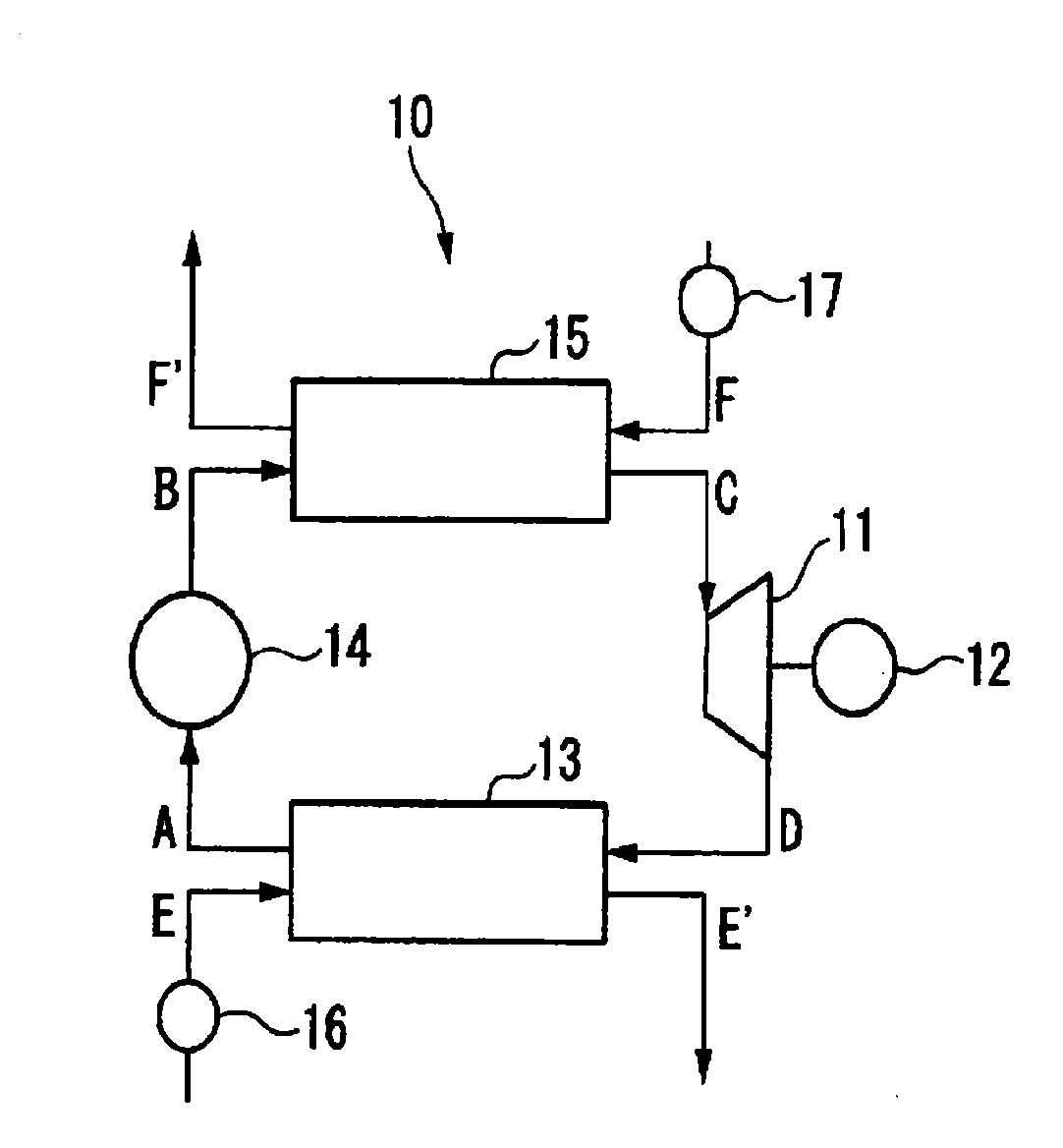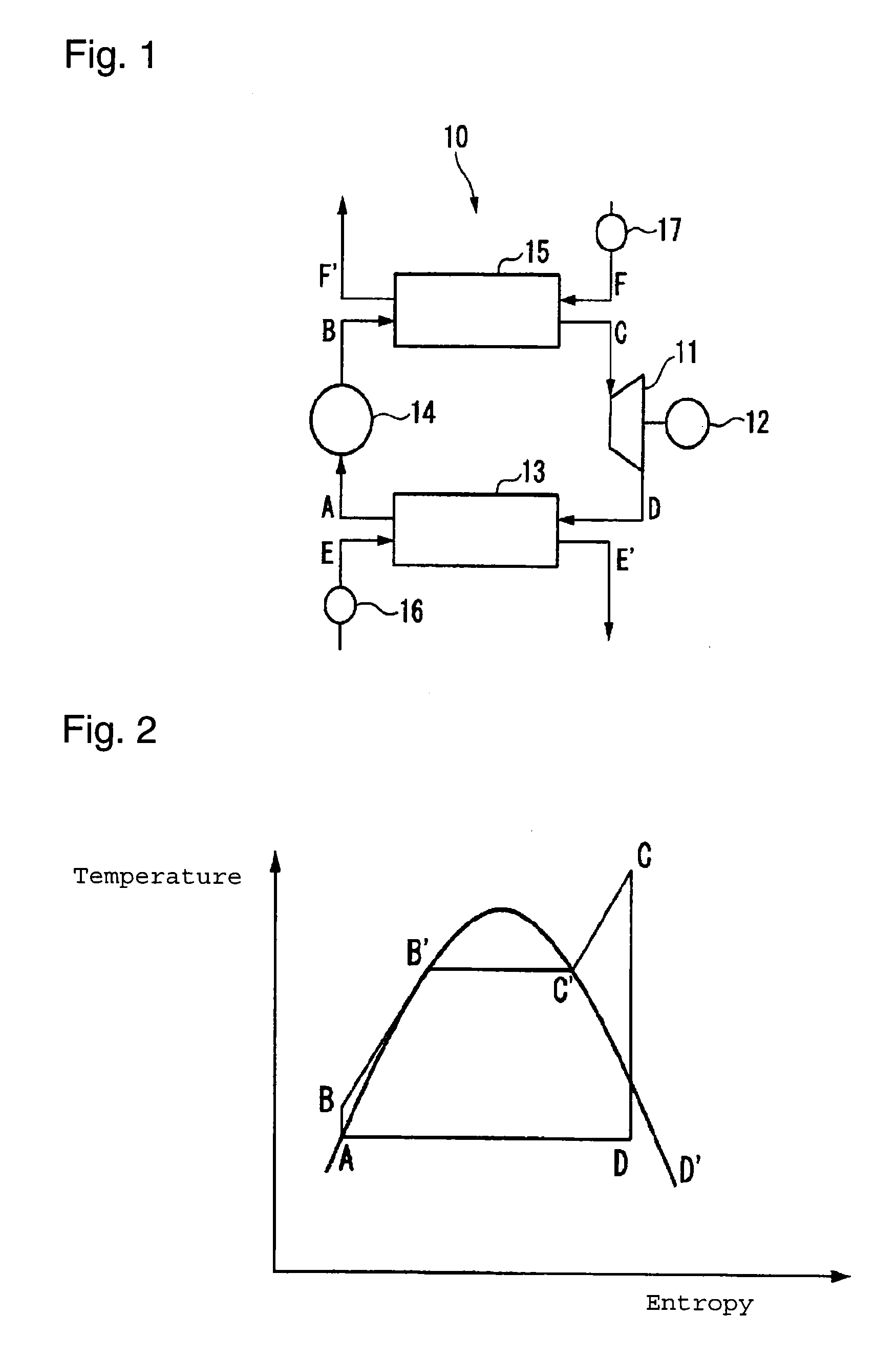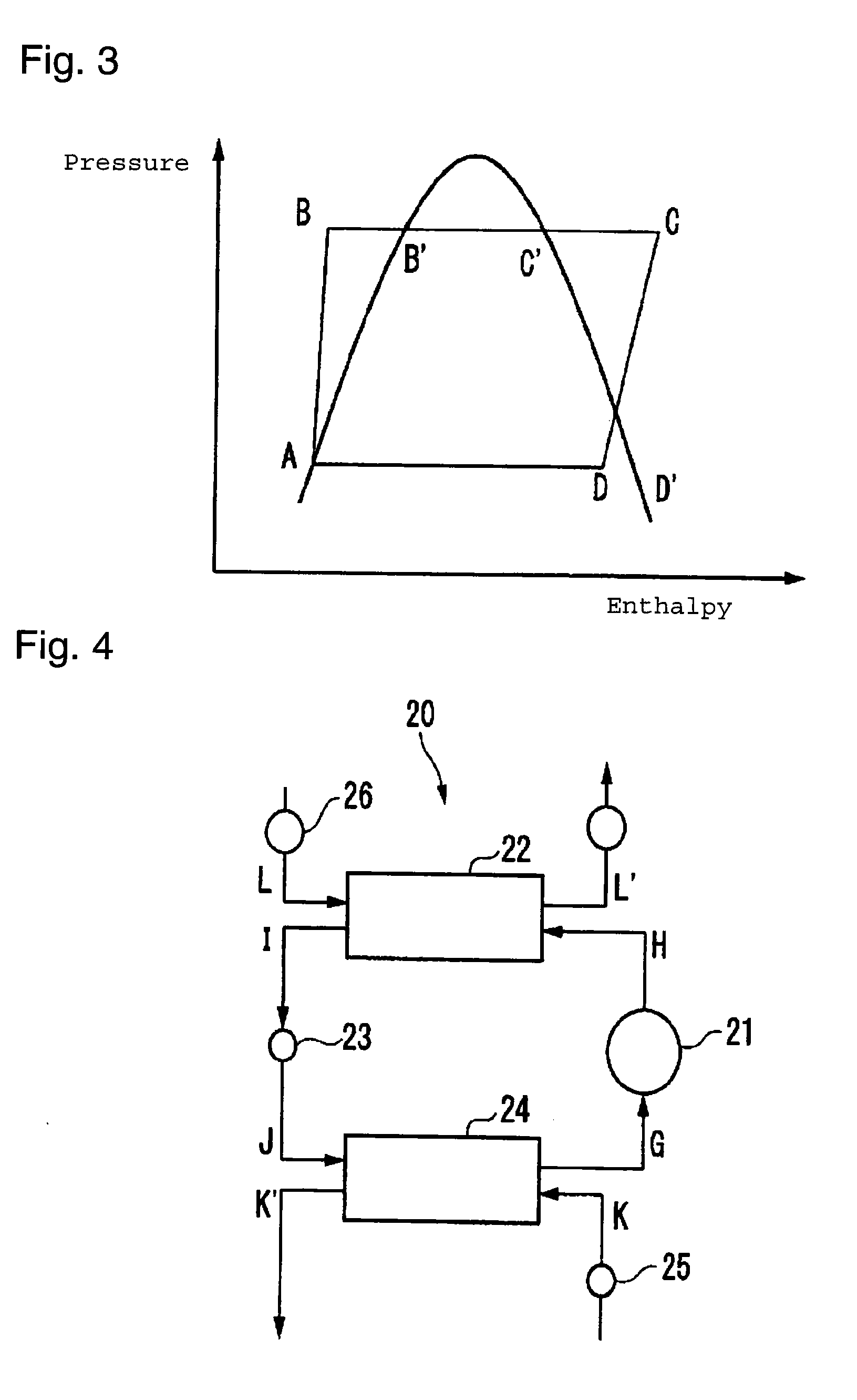Working fluid for heat cycle, rankine cycle system, heat pump cycle system and refrigeration cycle system
- Summary
- Abstract
- Description
- Claims
- Application Information
AI Technical Summary
Benefits of technology
Problems solved by technology
Method used
Image
Examples
example 1
[0070]The power generation capacity and the Rankine cycle efficiency were evaluated in a case where HFE-347 (AE-3000, manufactured by Asahi Glass Company, Limited) was applied to the Rankine cycle system 10 in FIG. 1.
[0071]The evaluations were carried out by setting the condensation temperature of the working fluid in the condenser 13 to be 25° C. or 50° C. and changing the maximum temperature of the working fluid in the expansion machine from 60 to 160° C.
[0072]Further, it was assumed that there was no pressure loss in the instrument efficiency, piping or heat exchangers.
[0073]Enthalpy h in states A to D was calculated based on the following critical constants determined on the basis of actually measured information, the vapor pressure equation, the saturated liquid density equation, the Starling-Han BWR equation of state, the isobaric specific heat in an ideal gas state and various thermodynamic equations.
[0074]Here, the critical constants and the coefficients for the vapor pressu...
example 2
[0088]The power generation capacity and the Rankine cycle efficiency were evaluated in the same manner as in Example 1 except that CFC-113 was used instead of HFE-347.
[0089]FIG. 7 shows the relative efficiency (HFE-347 / CFC-113) of the Ranine cycle efficiency at each maximum temperature when the condensation temperature is 25° C. or 50° C.
[0090]Further, FIG. 8 shows the relative capacity (HFE-347 / CFC-113) of the power generation capacity at each maximum temperature when the condensation temperature is 25° C. or 50° C.
[0091]From the results in FIG. 8, it was confirmed that HFE-347 is superior to CFC-113 in the power generation capacity under any condition.
[0092]On the other hand, from the results in FIG. 7, it was found that HFE-347 shows a slight decrease in the Rankine cycle efficiency as compared with CFC-113, but as is the maximum temperature becomes low, the degree of the decrease in the efficiency decreases.
[0093]From the foregoing results, it is evident that although the Rankin...
example 3
[0094]The heat pump capacity and the heat pump cycle efficiency were evaluated in a case where HFE-347 was applied to the heat pump cycle system 20 in FIG. 4.
[0095]An evaluation was carried out by setting the evaporation temperature of the working fluid in the evaporator 24 to be 0° C. and the condensation temperature of the working fluid in the condenser 22 to be 50° C. and changing the supercooling degree of the working fluid in the condenser 22 from 0 to 15° C. Further, an evaluation was carried out by setting the evaporation temperature of the working fluid in the evaporator 24 to be 25° C. and the condensation temperature of the working fluid in the condenser 22 to be 80° C. and changing the supercooling degree of the working fluid in the condenser from 0 to 15° C.
[0096]Further, it was assumed that there was no pressure loss in the instrument efficiency, piping or heat exchangers.
[0097]The enthalpy h in states G to I was obtained in the same manner as in Example 1.
[0098]Then, u...
PUM
 Login to View More
Login to View More Abstract
Description
Claims
Application Information
 Login to View More
Login to View More - R&D
- Intellectual Property
- Life Sciences
- Materials
- Tech Scout
- Unparalleled Data Quality
- Higher Quality Content
- 60% Fewer Hallucinations
Browse by: Latest US Patents, China's latest patents, Technical Efficacy Thesaurus, Application Domain, Technology Topic, Popular Technical Reports.
© 2025 PatSnap. All rights reserved.Legal|Privacy policy|Modern Slavery Act Transparency Statement|Sitemap|About US| Contact US: help@patsnap.com



